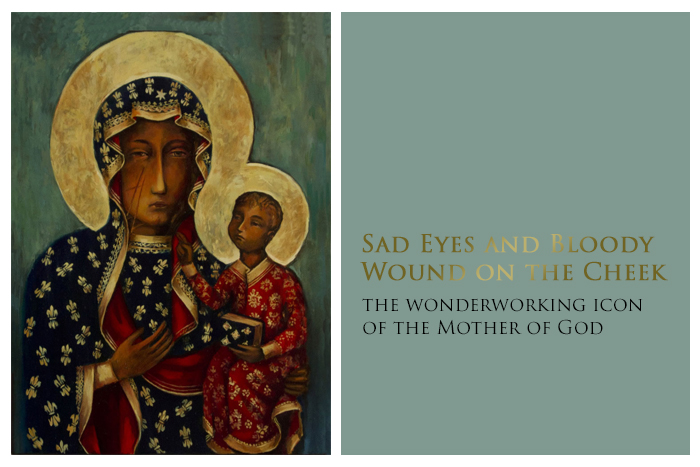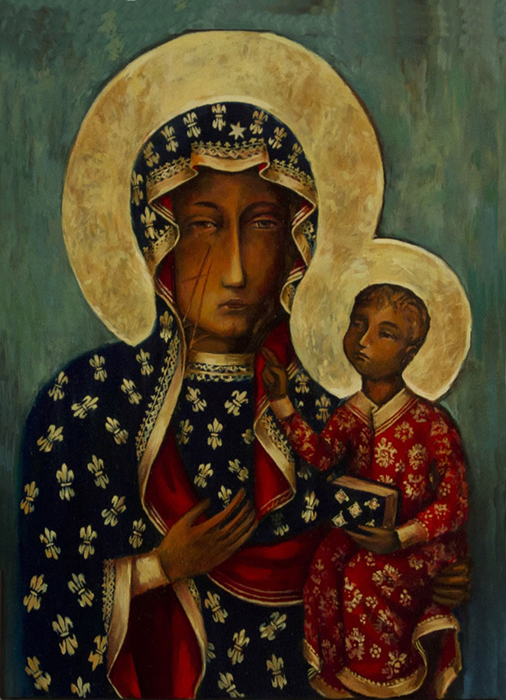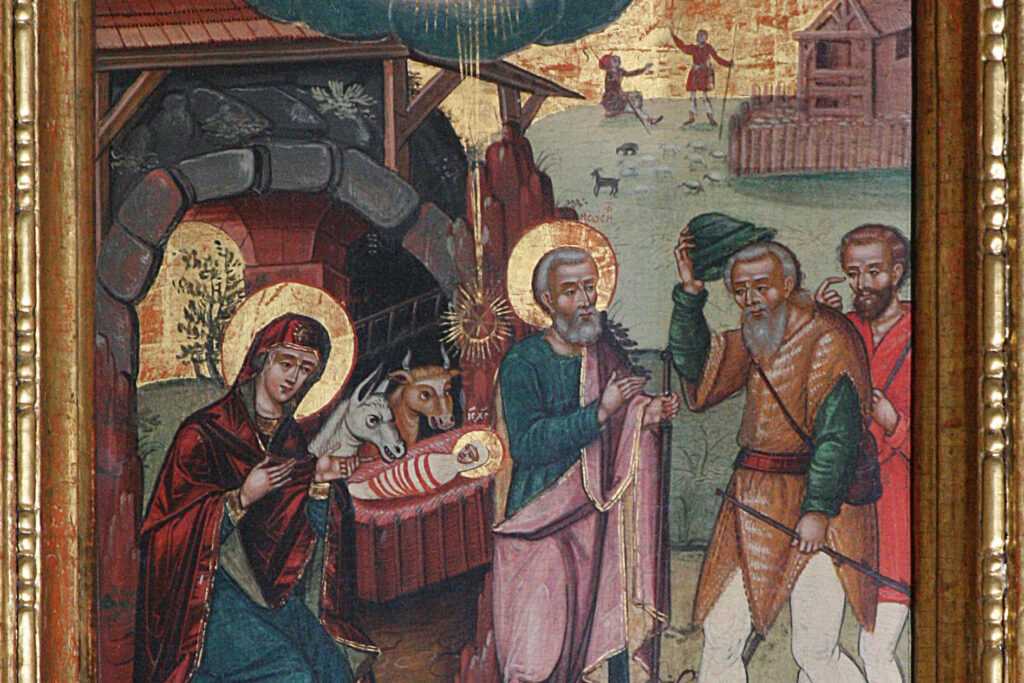
The Mother of God is looking sorrowfully from the wonderworking icon. Her face is dark. There is a bloody wound on her cheek. She holds the Divine Child in her hands…
The Hodegetria of Częstochowa is one of the seventy icons painted by the Apostle Luke during the life of the Virgin Mary. The Apostle John the Theologian kept the image for himself, and then after his death it passed into the hands of believers.
The Roman troops led by Vespasian and Titus captured Jerusalem in 66-67. Christians took the icon with them, left the Eternal City and hid in caves near Pella. According to a church legend, the sacred image was kept there until the fourth century.
When Queen Helen found the Cross of the Lord in 326, grateful Christians gave her gifts. The icon of the Mother of God was also among them. When St. Helen returned to Constantinople, she placed the icon in the chapel at her palace. For five centuries, the graceful icon rested in Constantinople, but in the 10th century the time came for it to leave Byzantium.
Holy Prince Vladimir, betrothed to Princess Anna, was blessed for his marriage with this icon. Following the newlyweds, the icon went to Kyiv, and then was solemnly transferred to the Belz castle. It was brought to the castle by Prince Lev, the founder of the city of Lviv. The local Orthodox clergy took the icon under their patronage. However, it did not last long. When the Poles seized the western Ukraine, the icon found itself in the hands of Duke Władysław Opolczyk. Soon, the Poles were also in jeopardy: the Mongols crossed Russia’s borders and surrounded the Belz castle.
The Polish duke appealed to the help of the Mother of God: the image was placed on the city wall. The Mongols began to shoot arrows, and one of them hit the face of the Mother of God. Blood ran out, and a sudden fog fell on Belz. Scared and shocked, the Mongols abandoned their attempts to seize the castle.
Duke Władysław had a dream that night in which the Mother of God herself appeared before him. “Take My Icon to the Jasna Góra Częstochowa,” She said and disappeared. Jasna Góra was called “a mountain of visions” by the people; miracles often took place there. In 1352, the Polish ruler founded a monastery there and transferred the holy image that had rescued him and the people with honors. The monks of the Pauline Order, founded in honor of St. Paul of Thebes, settled in the monastery.

Some time later, the monastery was attacked by Hussites, who were supporters of Czech church reformer Jan Hus. The invaders robbed the monastery and took away all its treasures. They also wanted to take over the Częstochowa image but their horses were unable to move no matter how hard they tried. This made the Hussites so angry that one of them threw an icon down and the other one swung his sword. The desecration of the icon brought an immediate punishment: the first robber was torn apart and the second one’s arm was paralyzed. The remaining intruders also were injured: some went blind, and some fell dead.
Raids and wars were ravaging the country time and time again. When the Swedes attacked Poland in the middle of the 17th century, the Poles were desperate. Troops led by Charles X Gustaf occupied Warsaw and Krakow, but they were unexpectedly defeated in the battle at the monastery on Jasna Góra. The emboldened residents realized that the Heavenly Queen stood up for them. Polish King Jan Kazimierz issued a decree entrusting the country to the Blessed Virgin Mary. The Częstochowa icon was called the ‘Queen of Poland’ in this document. Shortly afterwards, the Poles won the war with the Swedes.
Several copies of the wonderworking icon were made when Russian troops took over the Częstochowa fortress. The Russians led by General Fabian Gottlieb von der Osten-Sacken freed the area from the French in 1813. Then, the abbot of the monastery together with the brethren presented them with a copy of the wonderworking icon. Decorated with a lavish riza, it was placed in the Kazan Cathedral of St. Petersburg.
Nowadays, this icon of the Mother of God is revered by both Orthodox and Catholic believers. The Poles call it The Black Madonna because of its dark face. All visitors who come to Częstochowa love and venerate the sacred image. A special book is kept at the monastery, in which they record testimonies about miracles and healings from the image.
This wonderworking icon is especially revered by the believers in Belarus. One of its precious copies can be found in the Chmieleva Holy Transfiguration Monastery near Brest.
Feast Day: March 19 (March 6 O. S.)
Prepared by Lyubov Lutsevich
Translated by The Catalogue of Good Deeds



